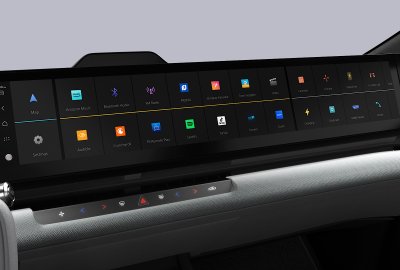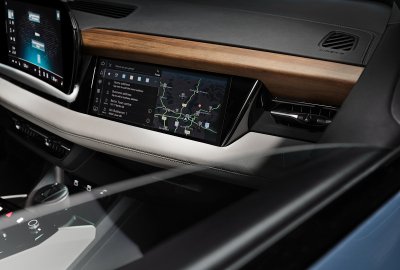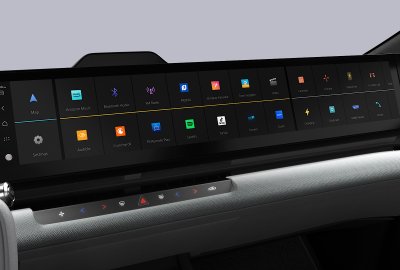The automotive industry has witnessed a significant shift in its approach to in-car displays over the past few years. While some manufacturers initially competed to install larger screens in their vehicles, many are now pulling back and refocusing on enhancing the user experience and content strategy.
“We’re well into this ‘digital arms race’ that has seen one automaker releasing the biggest screen, only to be one-upped by a competitor going bigger in their next model refresh,” said Brian Rhodes, director of connected car and vehicle experience at S&P Global Mobility. “At some point, the inches of screen loses importance and the focus is much more placed on user experience, content, updatability and value-add to the driving/passenger experience.”
Some automakers have taken innovative approaches to in-car displays. For instance, Sony Honda Mobility’s Afeela 1 features twin 12.9-inch displays for rear passengers and a pillar-to-pillar screen across the dashboard. The main infotainment touchscreen offers a range of apps, including access to Sony’s Xbox technology, and controls the car’s ‘themes,’ lighting, and screen skins designed to enhance the user experience.

In contrast, Mercedes-Benz has moved away from its Hyperscreen setup in recent models, breaking up the housing into separate components in vehicles like the new E-Class and forthcoming CLA sedans. Other manufacturers, such as Jeep, Audi, and Porsche, have adopted similar strategies. Audi’s approach is particularly notable, with the A6 E-Tron’s cockpit separated from the passenger screen by dashboard elements and tilted design features that obscure some of the screen from the driver’s view.


Passenger screens in many vehicles allow for gaming or video content streaming under certain conditions. For example, when a car is charging and not in motion, the central infotainment screen can be used to play games or watch YouTube videos. Mercedes’ Drive Pilot hands-off, eyes-off driving technology enables this functionality while the car is autonomously driven on highways.
Lincoln has taken a different approach with its pillar-to-pillar screen in the Nautilus. As part of its Lincoln Rejuvenate multisensory experience, the screen can display animated landscapes designed to create a spa-like environment while the vehicle is parked.

BMW has announced plans to pull back from installing large screens in its next-generation vehicles. Instead, the company is exploring next-generation heads-up display technology, which projects vital information onto the windshield in alignment with the road ahead, keeping drivers’ eyes forward.

As the industry continues to evolve, the focus is shifting from screen size to creating a more integrated and user-friendly experience. Automakers are recognizing that while larger screens can add value, they do not necessarily enhance the driving experience if not accompanied by thoughtful content strategy and user interface design.



